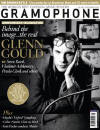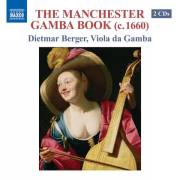Texte paru dans: / Appeared in: Label : Naxos Catalogue no : NAX857286364
|
|||||||
|
Reviewer: Julie Anne Sadie Sampling the biggest book of 17th-century solo viol music Here, at last, is a recording of a significant portion of the Manchester Gamba Book, said to be the largest extant manuscript of 17th-century solo viol music. Dating from about 1660, it contains 258 pieces by different composers (many of whom remain anonymous), notated in tablature and employing 22 different tunings. Dietmar Berger has chosen 46 of them for this twodisc set and performs them on treble and bass viols.
As a group, these pieces are richly embellished with ornaments, divisions and chords (made possible by the bespoke tuning); some are preludes, others are stylised dances and as many as half are based on popular tunes of the day. Paul Furnas, the leading authority on the manuscript, has provided the booklet-notes and draws attention, in particular, to Gervise Gerrarde’s Paven (disc 2, tr 15), which he considers to be ‘the gem’ of the collection. For those eager to try their hand, the tablature is available online from vdgsa.org.
This recording is a considerable achievement by any standard. Berger plays cleanly, his warm tone resonantly captured here. His command of divisions and the ornamentation is impressive even if his intonation occasionally falters. Although a cellist, he seemed most at home on the treble viol (disc 1, trs 6-8; disc 2, trs 6, 16 and 17). In ‘Whoope doe me no harm’ he traverses the gamut of his instrument, balancing the tune and its accompaniment, while in ‘The Nightengale’ his playful bariolage evokes the sound of fluttering wings, and in the short Preludium (disc 2, tr 16) he charmingly articulates the echoes suggested by the repeated motifs.
But here’s the rub: these are exceptional moments. What becomes evident is that, in order to bring these pieces truly to life, a greater hierarchical approach is needed so that the tunes stand out, the chords gently enrich the musical textures and the bass notes drive the harmony more effectively.
One longs for greater dynamic shading within phrases and textures. All too often ‘the story’ gets lost and the essential characteristics of the dances (the sarabands in particular) are obscured. |
|||||||
|
|||||||
|
|
|
||||||
|
Cliquez l'un ou l'autre
bouton pour découvrir bien d'autres critiques de CD |
|||||||




